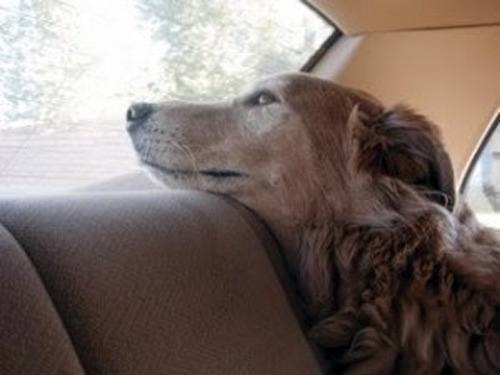With summer weather finally here, it’s time to remind pet owners across B.C. about the serious consequences for pets left inside cars on hot days.
Every year, the SPCA receives hundreds of complaints about dogs left in hot cars because many people still don’t grasp the danger of this situation. Even if you park in the shade and it seems cool outside when you leave, the sun can change direction and heat up a car’s interior in no time.
Many people assume they will be just a few minutes at a bank or convenience store, only to be delayed and return too late to save their pet. With an outside temperature of just 26 degrees Celsius, the temperature inside a parked car at this time of year – even one that’s in the shade with the windows cracked – can climb to above 37 degrees Celsius in just 10 minutes and 43 degrees Celsius in 20 minutes. A dog’s normal temperature is 38 degrees Celsius. At 41 degrees Celsius, your dog begins to suffer irreparable brain damage or death. If you see a dog languishing in a hot car, please call the SPCA, animal control or local police in your area. Before the authorities arrive, members of the public can help prevent a tragedy by attempting to find the animal’s owner. If the car is in a mall or grocery store parking lot, for example, ask to have the owner paged over the building’s PA system. Return to the car to monitor the dog’s condition.
In addition to not leaving pets in the car at this time of year, owners should use caution when exercising their pets under the sweltering summer sun. A lot of dogs will run and play to the point of exhaustion, and it’s the owner's responsibility to make sure that doesn’t happen.
Signs of heatstroke in pets:
• Exaggerated panting (or the sudden stopping of panting);
• Rapid or erratic pulse;
• Salivation;
• Weakness and muscle tremors;
• Lack of coordination;
• Convulsions or vomiting; and
• Collapse.
If your dog shows symptoms of heatstroke, you should:
• Immediately move the animal to a cool, shady place;
• Wet the dog with cool water (do not apply ice as it constricts blood flow);
• Fan vigorously to promote evaporation;
• Allow the dog to drink some cool water; and
• Take the dog to a veterinarian.
For more tips on how to keep your pet safe and happy this summer, visit spca.bc.ca.
Lorie Chortyk is the general manager, community relations, for the BCSPCA.
